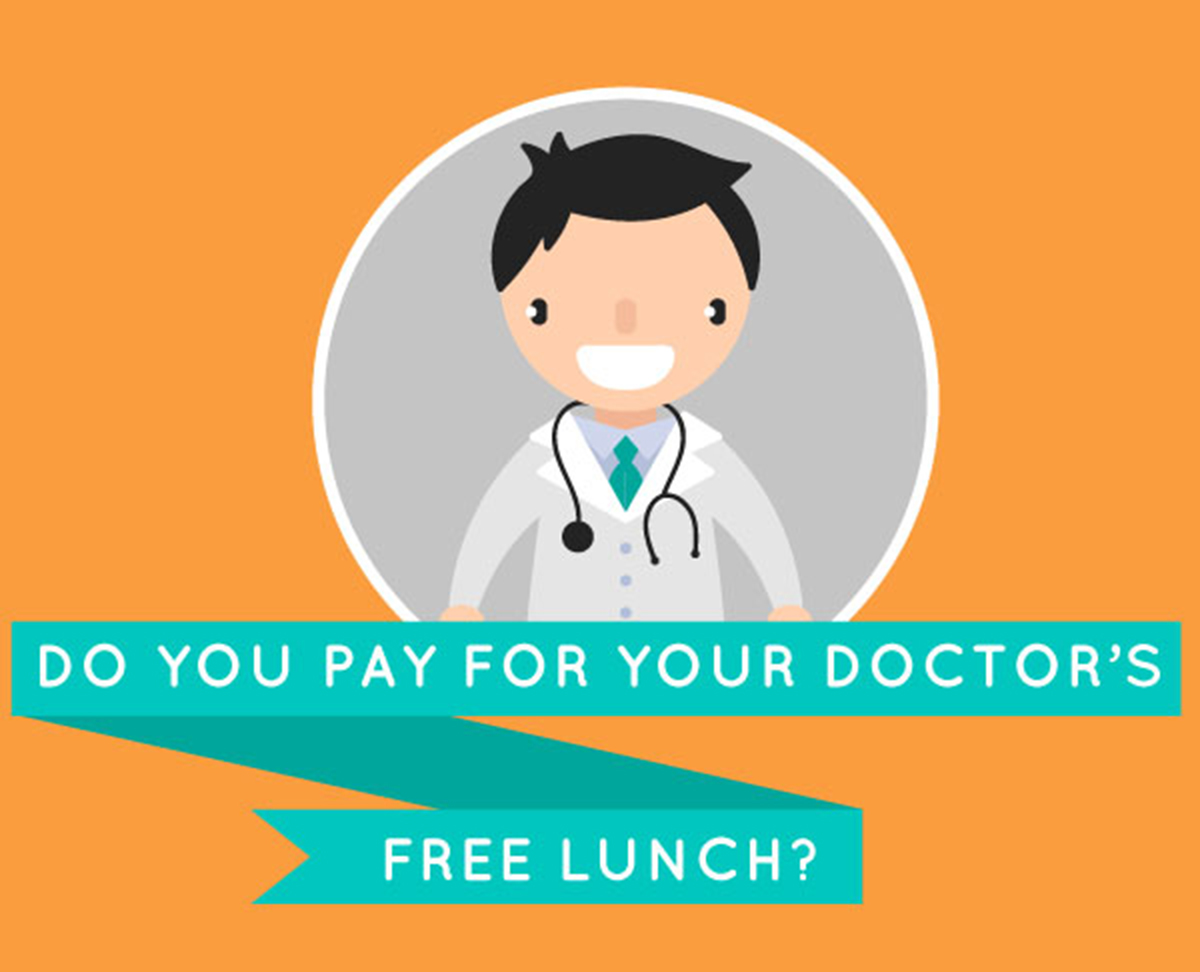Table of Contents
The researchers found similar trends for two other drugs they studied, Benicar (olmesartan), a drug for lowering blood pressure that doesn't cause dry cough like some other drugs in its class, and Pristiq (desvenlefaxine), a treatment for anxiety that is also the first non-hormonal treatment for hot flashes in menopause. Four sponsored meals was associated with a 400 percent increase in the rates of prescribing Benicar, and three free meals was associated with a 500 percent increase the rates of prescribing Pristiq. (A fourth meal was associated with lower rates of prescribing Pristiq, just a 300 percent increase from baseline.) For all four commonly prescribed drugs, for tens of thousands of doctors, eating a free lunch was associated with a greater likelihood of prescribing an expensive drug.

How much difference does this make for patients? In the US, if you are insured, a generic drug may be available for free or with a low ($2 to $20) copayment. If you are not insured, or if you are in the "gap" of your Medicare coverage, you may have to pay a great deal more for a brand-name drug than you would have to pay for a generic drug.
- A 30-day supply of Crestor costs $194 to $231, depending on where you buy it and whether your doctor can give you a discount coupon, but the same amount of generic rosuvastatin costs about $60. For Crestor and for most other drugs, lower prices can be found at mail order pharmacies or Canadian pharmacies, but not without risk of getting something other than the medication your doctor prescribed.
- A 30-day supply of Bystolic costs $130 to $150 if you have to pay cash, but the same amount of generic nebivolol costs $65 to $81.
- A 30-day supply of Benicar costs $227 to $264, but a 30-day supply of its generic equivalent olmesartan and hydrochlorothiazide costs $64 to $117.
- A 30-day supply of Pristiq costs $298-$350, while a 30-day supply of the generic venlefaxine costs $11-$13 with a coupon.
If you are paying for medications out of pocket, your doctor's free lunch can cost you a great deal of money, thousands of dollars per year. To be fair, there is no certain evidence that doctors prescribe these drugs out of any kind of gratitude to the drug company for a free lunch. It could be that they prescribe these drugs for the simple reason that the brand name comes to mind more quickly than the generic name after they have spent an hour with the drug salesperson. However pure the motives of the doctors in writing their prescriptions however, it is the patients who pay for the doctor's free lunch.
It never hurts to check out just how much money your doctor receives from drug companies from the Open Payments database. There's a link to the database posted below. Chances are that your doctor is in the 91 to 99 percent of doctors who each year receive payments of $100 or less, and there is very, very little chance of your doctor's professional integrity being compromised. If something seems a little strange about the way your doctor is prescribing drugs, however, check the database, and then don't be afraid to get a second opinion.
- DeJong C, Aguilar T, Tseng CW, Lin GA, Boscardin WJ, Dudley RA. Pharmaceutical Industry-Sponsored Meals and Physician Prescribing Patterns for Medicare Beneficiaries. JAMA Intern Med. 2016 Jun 20. doi: 10.1001/jamainternmed.2016.2765. [Epub ahead of print] PMID: 27322350.
- Infographic by SteadyHealth.com


Your thoughts on this